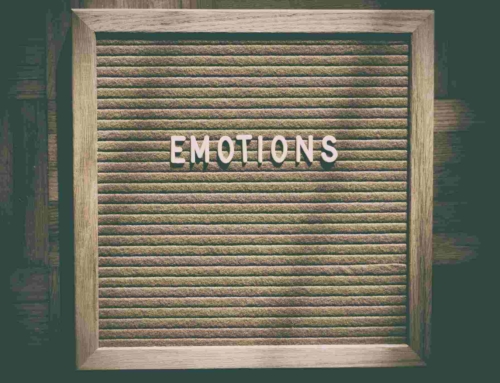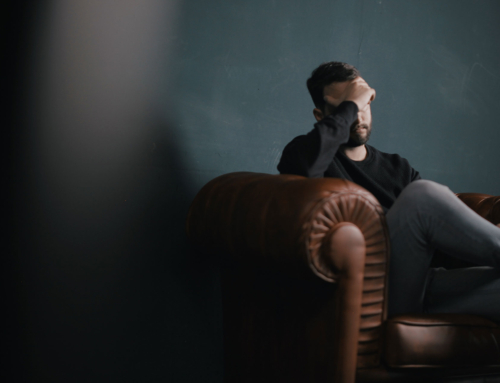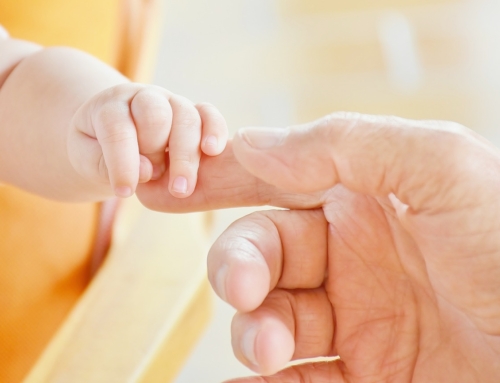First, let’s look at what depression is and what the difference is between being sad, and depression. Being sad is a normal and healthy human emotion. It is a natural response to loss, rejection, and disappointment. Depression is a very common emotional issue and can be caused by an event or it can feel like it has come out of nowhere.
 Some people think that going to their doctor and getting medication will solve the problem and often times it helps, but it feels like you are still stuck. The line between sadness and depression is when the sadness effects your functioning.
Some people think that going to their doctor and getting medication will solve the problem and often times it helps, but it feels like you are still stuck. The line between sadness and depression is when the sadness effects your functioning.
The feeling is intense enough that you feel like giving up, or feel like you do not have enough energy to get through the day. You may feel like there is nothing that you can enjoy anymore, or that things that used to make you happy just don’t anymore. It might be exhausting for you to complete self-care like showering or brushing your hair, and hanging out with friends seems irritating and exhausting.
You might feel like or think about hurting yourself or even killing yourself to make things better, to get out of the pain that you are feeling. Depression can also be recurring. It may come back after you have been feeling better for a while. If you rely on medication alone to help, then the symptoms of depression might come back and you will not have learned any skills to deal with your depressive symptoms.
What Does Depression Look Like in the Brain?
It is true that medication can sometimes help because depression can be caused by a chemical imbalance in the brain. There is not just one chemical, however, that is responsible for depression. Someone with depression could have a different chemical imbalance than someone else with depression.
Sometimes depression is related to an imbalance with mood regulation. Not only is depression present when there is an issue with chemicals in the brain, but nerve connections, cell growth and function of the nerve circuits have a large impact on depression and how prone a person is to getting depression.
Even though medication can work for chemicals in the brain, it might not last long term and it is not always the cure. The only way to truly find long lasting effects for depression is by consulting a psychiatrist to see if medication would work for you, and seeing a therapist to help change your thoughts and perceptions and build healthy habits.
Lasting Treatment for Depression
In order to treat depression and have a long lasting effect, the most effective treatment is Cognitive Behavioral Therapy or CBT. CBT works with the CBT triangle as its foundation. The CBT triangle is the idea that thoughts, emotions, and behaviors are all connected and influence each other.
 This triangle is how people react to situations that they experience on a day to day basis. Situations are the events that we have little or no control over, and the CBT triangle determines what our response will be to the situation.
This triangle is how people react to situations that they experience on a day to day basis. Situations are the events that we have little or no control over, and the CBT triangle determines what our response will be to the situation.
In order to change your responses to situations, there needs to be a change in your thoughts and core beliefs about yourself. By changing your thoughts into helpful and productive thoughts your behavior and your emotions are influenced in a positive way. Even if you do not recognize it, or are unaware of it, thoughts drive emotions and behaviors.
For example, if your core belief is “I am worthless,” your thoughts will most likely be, “nobody even cares if I go to the party tonight, I might as well just stay home.” This thought then leads to you staying home and isolating yourself from connections with people which leads to further loneliness and worthlessness.
If you are able to change your core belief to, “I am worthwhile,” then your thoughts might be, “people will ask where I was if I don’t go to the party.” This thought will most likely lead you to go to the party and connect with people, which will lead you to feel worthy of love and connection. It may seem easy to just change your thoughts and core beliefs, but this is the most challenging part of therapy. It is also the most important part of having a solution that lasts.
So what are core beliefs? Core beliefs are what you think and feel about yourself, consciously or unconsciously. Most people have negative core beliefs such as “I’m ugly”, “I’m worthless”, “I’m annoying”, “I’m unlovable”, “I’m stupid” and the list goes on. These beliefs about yourself influence every thought and emotion and play a role in how you interpret situations and events.
If you have the core belief, “I’m unlovable” and a coworker brings in cupcakes for their birthday and is passing them around but doesn’t give one to you, you will have a negative thought. You might think, “wow, that person must hate me, see, this always happens to me, they like everyone, but not me I guess.”
If that same situation happened, but you have the core belief of, “I’m lovable” then you might have the thought, “they forgot to come by my desk, I’ll go over to them to get a cupcake and say happy birthday.” The situation for both is the same. With a negative core belief, you feel isolated and lonely. With a positive core belief, you do not internalize the unwanted outcome and you act so that you get what you want.
Now that I Know About CBT Triangles, What Do I Do?
The best thing to do if you are feeling depressed and want to know more about CBT and CBT triangles is to see a therapist. A therapist, trained in CBT, can help teach and support you through your journey of changing your negative core beliefs and thoughts. You will learn many skills and techniques to help you with this change, such as socratic questioning, where you challenge your thoughts head on.
 You will learn how to start being aware of your thoughts and learn how to slow down so you have time to pause and think before acting. You will also learn coping skills so that you can start being able to function the way you want even while in the midst of working though emotional pain.
You will learn how to start being aware of your thoughts and learn how to slow down so you have time to pause and think before acting. You will also learn coping skills so that you can start being able to function the way you want even while in the midst of working though emotional pain.
You will explore activities that will help you become more proactive in your healing process. You will also learn about behavioral activation. Behavioral activation is another important aspect of finding a solution that lasts. Behavioral activation is making yourself do the activities and actions you know are healthy for you, but that are so hard to do while feeling depressed.
Some categories of behavioral activation include finding hobbies, getting exercise, getting out in the sun, and socializing. Behavioral activation is a good way to start practicing self-care. When some people hear the word self-care they associate it with being selfish, time consuming and expensive. When it comes to taking care of your body and mind, you should never feel like someone else’s needs come before yours.
The basics of self-care are eating healthy, exercising, sleeping well, connecting with others and personal hygiene. A therapist can help brainstorm activities that will work for you for self-care as well as behavioral activation. They can help you keep on track by discussing what worked and didn’t work from week to week.
Your therapist can assign “homework” for you to do between sessions, such as “try to talk to one new person this week” if you are struggling with isolating yourself, or “track how often you shower this week” if you are struggling with basic self-care.
What if I’m Not Ready for Therapy?
If you do not feel like you are ready for therapy yet and need some ideas for working on your depression at home, here are a few things you can try. Try the self-care and behavioral activation activities of cognitive behavioral therapy. Taking time for your mind and body is important and does not need to be expensive or time consuming.
Something simple like listening to your favorite music while you are making your lunch or getting ready in the morning might be enough time for you to start the day off with a positive mindset.
Writing down in your journal the things you are grateful for that day, or doing a deep breathing or morning mediation activity for five minutes when you wake up and go to sleep are also great activities to reset your mind and a way to focus on what is positive right now and what will be positive about the day ahead. Starting off your day in a positive frame of mind will help you continue thinking positively throughout the day.
 Self-care is important and doesn’t have to take up a ton of time. Time is valuable, and we tend to not have enough time for all of the things we have to do. Combining our self-care needs with things we have to do will be great energy and time savers, and a way to work on your depressive symptoms. Here are some ideas for combining self-care and behavioral activation activities.
Self-care is important and doesn’t have to take up a ton of time. Time is valuable, and we tend to not have enough time for all of the things we have to do. Combining our self-care needs with things we have to do will be great energy and time savers, and a way to work on your depressive symptoms. Here are some ideas for combining self-care and behavioral activation activities.
If you get a lunch break at work, walk outside or drive to the nearest park to eat and get some sun exposure, rather than being at your desk or in the dark break room.
No time to exercise? Walking at lunch or after work or parking in the farthest parking spot when you go to the store are great ways to get some steps in. If you have a desk job, getting up every hour and walking to get a cup of water or do some stretches or go say hi to a coworker will help with sustained concentration as well as being able to get some steps in.
No time to socialize? Try eating lunch with coworkers, or getting up and asking questions in person rather than calling or sending an email to a coworker. If you have children, stay at their extracurricular activities and talk with the other parents. You can ask a friend to go walking with you after work so you can get sun exposure, socialization and exercise all at the same time.
Eating healthy is also a great way to practice self-care and will make a difference in how you feel. Eating healthy doesn’t have to be expensive, there are many great options that are quick and easy. If you don’t have time to make lunch, going to a fast food restaurant and ordering a chicken sandwich without mayonnaise, and a side salad instead of fries is not a bad option.
Shopping in the frozen section at the grocery store is an easy way to get cheap frozen fruits and vegetables that are fast and easy to prepare and you won’t have to worry about them going bad before you eat them. Try making a meal plan for the week and only buying groceries for those meals.
This can save time and money at the grocery store, help you keep on track with healthy meals as well as save money during the week because you won’t have to eat out because you don’t have anything in the fridge to make a meal out of. This will save time in the mornings for lunch because you can use dinner leftovers for lunch. This can also save you time at night because you don’t have to decide what you are going to make that night.
Where Can I Get Help?
If you decide that you want to find a long-lasting solution that works for you start with talking to your doctor about your symptoms. They will be able to advise you about what would be the best step to take. They might refer you to therapy, and they might refer you to a psychiatrist. Your doctor can even prescribe you medication if they feel like that is appropriate.
If you are feeling depressed, it is always a good idea to schedule an appointment with a therapist. Not all therapists are created equal and not all therapists will be a good fit for you. I encourage you to not give up looking for a therapist if the first one you see is not what you are looking for. There are secular therapists as well as therapists that are affiliated with a specific religion.
Here, at Seattle Christian Counseling, we know that it is the healing power of God that is critically important in your journey to a better life. Take that first step and schedule a risk-free initial session with me or another counselor at Seattle Christian Counseling. You can make an appointment through our website.
“Tired Man”, Courtesy of Mic445, Flickr.com, CC BY 2.0 License; “Light in the Darkness”, Courtesy of Hartwig HKD, Flickr.com, CC BY-ND 2.0 License; “Jogging”, Courtesy of Curtis MacNewton, Unsplash.com, CC0 License; “Be the Miracle,” courtesy of Kinga Cichewicz, unsplash.com, CC0 License









